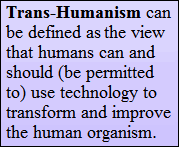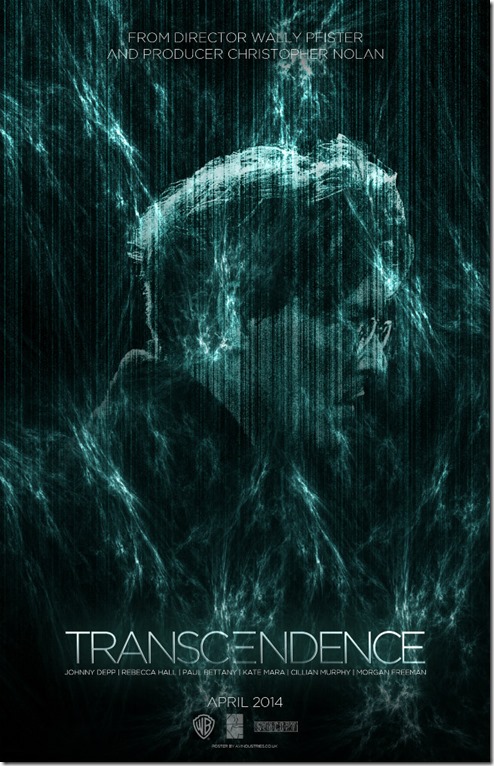The Paradox of Liberation: Secular Revolutions and Religious Counterrevolutions, by Michael Walzer, Yale University Press, 192 pages, $26
“[They] saw that the cherished ideals of their race – their thrones and their families and the very Gods that they worshipped – were trampled underfoot, the holy land of their love devastated and sacked by hordes of barbarians, so inferior to them in language, religion, philosophy…” Thus wrote the Indian nationalist and fighter for independence V.D. Savarkar in 1923, but if he had written “God” instead of “Gods,” his anti-colonialist thoughts could easily be attributed to the Zionist Revisionist leader Ze’ev Jabotinsky, or to ideologue Israel Eldad. Like them, Savarkar was secular, and like them he too enlisted symbols and conceptual structures from religion in his struggle against the foreigners who ruled his country.
Something else the three had in common is that, although they were in the political minority during the struggle for national liberation in their countries, their ideas still resonated decades after independence was attained. Now, however, their ideas were invoked by religious leaders, who viewed their words not only as metaphorical banners that could spur unity, but as dogmatic and comprehensive frameworks for life. It is this process – the rise of the shunned and silenced religious element in nation-states that were founded as secular – that Michael Walzer addresses in his new book.
An expert in ethics and political science, and one of the leading public intellectuals of our time, Walzer examines three cases: Israel, India and Algeria. All three gained independence after fighting a colonial ruler – Britain, in the cases of Israel and India; France, in that of Algeria. All three countries made an attempt, with varying degrees of success, to introduce democracy, and all three have experienced a significant awakening of religion that is undermining that democracy. Walzer wants to understand why.
Europien Elites
His starting point is the differences in worldviews. Walzer notes that even though the three liberation movements struggled against European forces, those who waged the struggle were also European, if not in origin then in outlook. In other words, they were secular nationalists who set out to forge democratic regimes. As such they were very different from large parts, if not the overwhelming majority, of the oppressed population on behalf of whose independence they fought.
Like Moses in the house of Pharaoh, the leaders of the liberation movements grew up differently from most of those they were fighting for, and they were also educated differently. In fact, they were educated in the culture of those who subjugated their nations.
For instance, Jawaharlal Nehru, India’s first prime minister, spent no less than eight years studying in Western institutions. India’s first minister of justice, B.R. Ambedkar, who was also instrumental in formulating his country’s constitution, held doctoral degrees from both Columbia University and the London School of Economics. For their part, Theodor Herzl and Chaim Weizmann were European in origin and education. Frantz Fanon studied psychiatry in France, and Ahmed Ben Bella, Algeria’s first president, served for many years in the French army and was even awarded its highest honor.
In contrast, the society being liberated was non-European and traditional (even to an extent in Israel). Thus, the leaders of the national-liberation movements were very different from those they were bent on liberating. Decades later, that same population – this time, as citizens of democratic nation-states – would vote for religious or traditionalist forces that would undercut the ideological descendants of the state’s founders.
The Paradox of Liberation
However, it was not only separation but also overbearing arrogance that characterized the relations between liberators and liberated. The former demanded that the latter shed their traditional ways. They believed that only a total transformation in the character of those who had been oppressed would allow them to escape their downtrodden condition.
Israel’s first prime minister, David Ben-Gurion, talked about “the worker in the Land of Israel” as a new offshoot unconnected to the ancient tree of Diaspora Jewry. Fanon wrote about a “new Algerian” who underwent a “mutation” that made possible the struggle for national liberation. In India, the complaint about the submissive, kowtowing character of the masses was a regular refrain in the battle of the aspirants to independence, at least from the start of the 20th century.
Thus, not only were the leaders of the national independence movements a different breed – they also demanded that the masses who were to be liberated transform themselves. They perceived them as inferior and lorded it over them as a superior elite, intellectually as well as in terms of character and willpower. Zionism’s “negation of the exile,” Walzer reminds us, was more than an admonition to put an end to the Diaspora: It constituted an aggressive denial of everything the Diaspora stood for, of the whole Jewish manner of being that it cultivated and supported. The creation of the new Jew (and the new Indian, and the new Algerian) entailed putting an end to the existence of the old.
However, the old Jew, like his Indian and Algerian counterparts, was dear to the hearts of multitudes. They delighted in the fruits of liberation, but were disinclined to part with their past, their culture, their way of life. The liberators’ condescending demand that they do just that, and their pride and their silencing of the voices of the masses – these brought about disparities between the groups, but also tension and antagonism. That, Walzer writes, is the “paradox of liberation” (hence also the book’s title). The subsequent religious revival sprang from that very disparity and antagonism.
Historic irony
And here’s another paradox or, rather a historic irony: The return of tradition and religion is taking place in an untraditional way. In fact, it’s draping itself like a robe over the national body, and coming back in the form of national-religious fundamentalism. In Israel there was Gush Emunim (Bloc of the Faithful) and now its paler offspring, Habayit Hayehudi. In India there’s the RSS, a Hindu nationalist movement that wants to reconstitute the kingdom of Rama, a mythological entity in which Hinduism enjoys its zenith under the earthly dominion of the god Rama. Similarly, the nationalist Islam of the Islamic Salvation Front, which as a political party almost took power in Algeria in 1992, but was blocked by a military coup, triggering a civil war in which about 100,000 Algerians died in the 1990s.
Religion, unsilenced, has reentered our lives in recent decades, through the democratic political system, drawing a large following in its wake as it made its appeal in the name of nationhood no less than in the name of God. In the next phase, it assails other religions as well as the old elites: “‘Westernizing’ leftists, secularists, heretics, and infidels – traitors, it is said, in our midst,” Walzer writes, summing up a familiar process.
Marxists ans Post-Colonialists
Walzer devotes part of his book to refuting those viewpoints that see no paradox in religious revival springing from secular nationalism. Thus, according to the Marxist or the post-colonial approach, there is no real struggle or contradiction here, but a direct continuation of two forces that deep down feed off each other. Marxists will argue that religious beliefs and identities are the products of a false consciousness that is utilized by the hegemony of big capital to rule the masses. The national liberators don’t understand this and substitute nationalism for religion as a new smokescreen for the exploitative mechanism of the market forces.
Post-colonialists will long for a pre-colonialist past, when religious tradition was supposedly moderate and nurturing, indeterminate and dialogic. In their view, the modern expressions of religion are no more than the monstrous offspring of colonialism itself. Thus, the fighters for independence were merely continuing colonialism under a different cover and are thereby encouraging the growth of fundamentalism. In both cases, a religious resurgence is not a paradox but a logical outcome.
Walzer reminds Marxists that nowhere in the world, ever, has pluralistic universalism succeeded in supplanting national identity, and that foreign rule has been experienced in every case as national – not class – oppression. In addition, he notes, all the national liberators sought to create democracies, however flawed and imperfect, but their ambition was definitely to be accepted as legitimate members of the family of nations.
Contrary to them, the agents of religious revival challenge democracy, if they don’t actually reject it. They are not interested in universal values of human rights but in particular religious laws, whether of sharia or halakha or dharma, and they always rely on a fundamentalist interpretation of those laws. They have no wish to be part of the family of nations, but rather they counterpose themselves to it, like a charming teen with special needs. It is illogical, Walzer claims, to think that religious fanaticism springs naturally from democratic nationalism, as the two are utterly different. “Labor Zionism doesn’t produce religious zealotry; we might better say that its most authentic product is the Palestinian national liberation movement,” he writes.
The writer reminds post-colonialists that religion before modernity was not so moderate and accepting, but quite oppressive – toward adherents of other religions, for example, and toward women. On the contrary, the rise of religious fundamentalism is actually a reaction to liberalism, and above all to women’s liberation. What generated fundamentalism is not national suppression but the freedom spawned by democracy.
A Need for Dialectics
In the end, Walzer argues, the secular-liberal frameworks are too weak. They are unable to create a stable identity, sources of inspiration and, by the same token, continuity. They surrender in the face of religious revival. Walzer blames the liberators for not acting to bolster ties with the religious elements. If religion were accorded a larger place from the outset, the emergence of a religious contrarian character could be avoided. “Traditionalist worldviews can’t be negated, abolished, or banned; they have to be engaged,” he writes. What’s needed is a dialectical process in which the two poles are brought into contact and interact with each other to the point of creating a third entity. That did not happen, Walzer maintains, and we can see the results.
This, then, is his answer to the paradox of liberation: A total rejection of religion and a condescending attitude toward the religious public are the seeds that engender a fundamentalist religious revival. It is impossible to escape the past, and a tree cannot be made to grow without roots. Engaging tradition in a deep dialogue, Walzer writes with a measure of hope for Israel, “might still improve the odds – for the eventual success of Jewish national liberation.”
On Christianity and Other Religions
Although I agree completely with Walzer that an ignored past will return and make its presence felt sharply, and that it is of surpassing importance, even now, for secular society in Israel to enter into an intensive dialogue with Jewish tradition – I want to propose a different direction for thinking about religious revival, using his examples. This direction seeks to apprehend that revival in the three countries under consideration as a reaction not to detachment or to condescension, but to a foreign political and social superstructure. That is, simply, we should note that in each of the countries – Israel, India and Algeria – the religion that returns to center stage is not Christianity.
This is a significant point, because secular, democratic nationalism – of which an essential element is the separation of religion from state and the rendering of religion as a private matter for each citizen – is a phenomenon that derives from Protestantism and that is shaped by its religious model. In the cases under discussion, then, the reaction is not only one of a tradition that was forgotten, whether in a natural process or by force, and is now rising to the surface again: The reaction is that of a collectivist religion that harbors extreme ambitions for the public space, and that rises to the surface in contradistinction to a secularized, privatized political body that is structurally based along the lines of a foreign religious model.
Judaism, Islam and, to a lesser degree Hinduism, are incapable of fully digesting the process of Western secularization, which sprang from Protestantism. (Even Catholicism had a hard time accepting secularization, not recognizing it in essence until the 1960s in Vatican II.) It should be clear that any attempt to secularize the religions according to that model will generate a challenging response. Indeed, no fundamentalist resurgence occurred in Christian countries that were liberated from colonialism.
In a postscript to his book, Walzer surveys the liberation movement that transformed 13 British colonies into the United States of America, and admits, as in passing, “The idea of a secular state did not challenge the deepest convictions or feelings of (most of) the future citizens of the American republic.”
This is the core of the matter. As Walzer notes, the separation of religion from the state even gained the support of evangelical Protestants, because one’s relationship with God was perceived from the outset as a private and individual matter – not as communal, social or national. In short, the evangelicals view the state as a threat to religion; religious Zionism views it as the earthly foundation of the seat of God.
Consider, for example, Ireland, which gained its independence from Britain after a struggle. It’s always been a Catholic country, but the recent referendum approving same-sex marriage by a large majority indicates that the state is definitely not moving toward a revival of religious fundamentalism.
Similarly, the East European countries that attained freedom after years of Soviet domination are not spawning radical religiosity – whereas the movement for the liberation of Palestine is coping with a Muslim religious resurgence even before achieving its goal.
Prof. Walzer’s new book analyzes one of the fateful questions of our generation: why young democracies constitute fertile ground for the rise of extreme religion. He cites a great deal of evidence and presents the considerable resemblances in the three examples he writes about. Undoubtedly, the alienation between the liberating elite and the liberated masses played an important role in the return of tradition after its suppression. This is a spectacle we are witnessing today. However, it is not the whole story. The causes of religious revival need to be sought in religion.
:
—
Published in Haaretz









